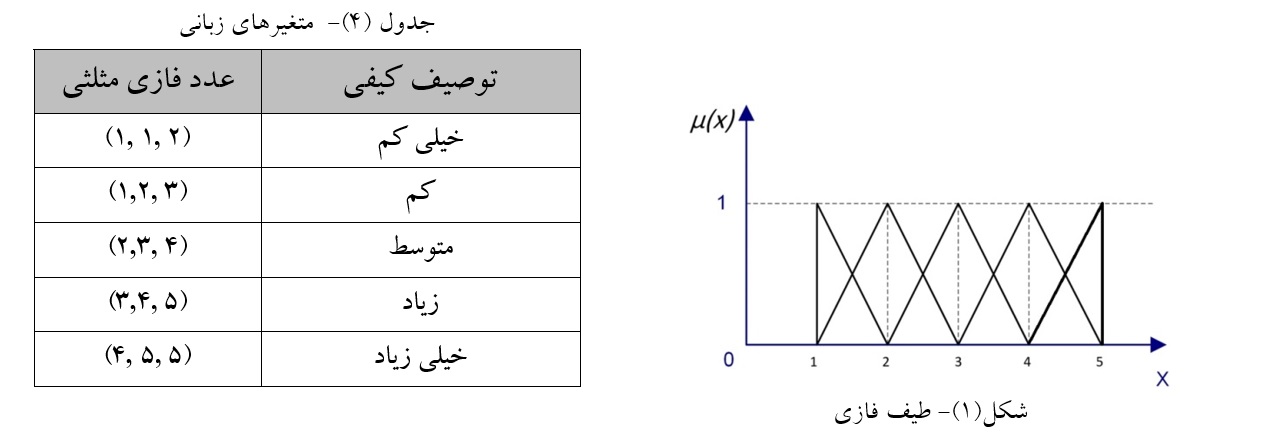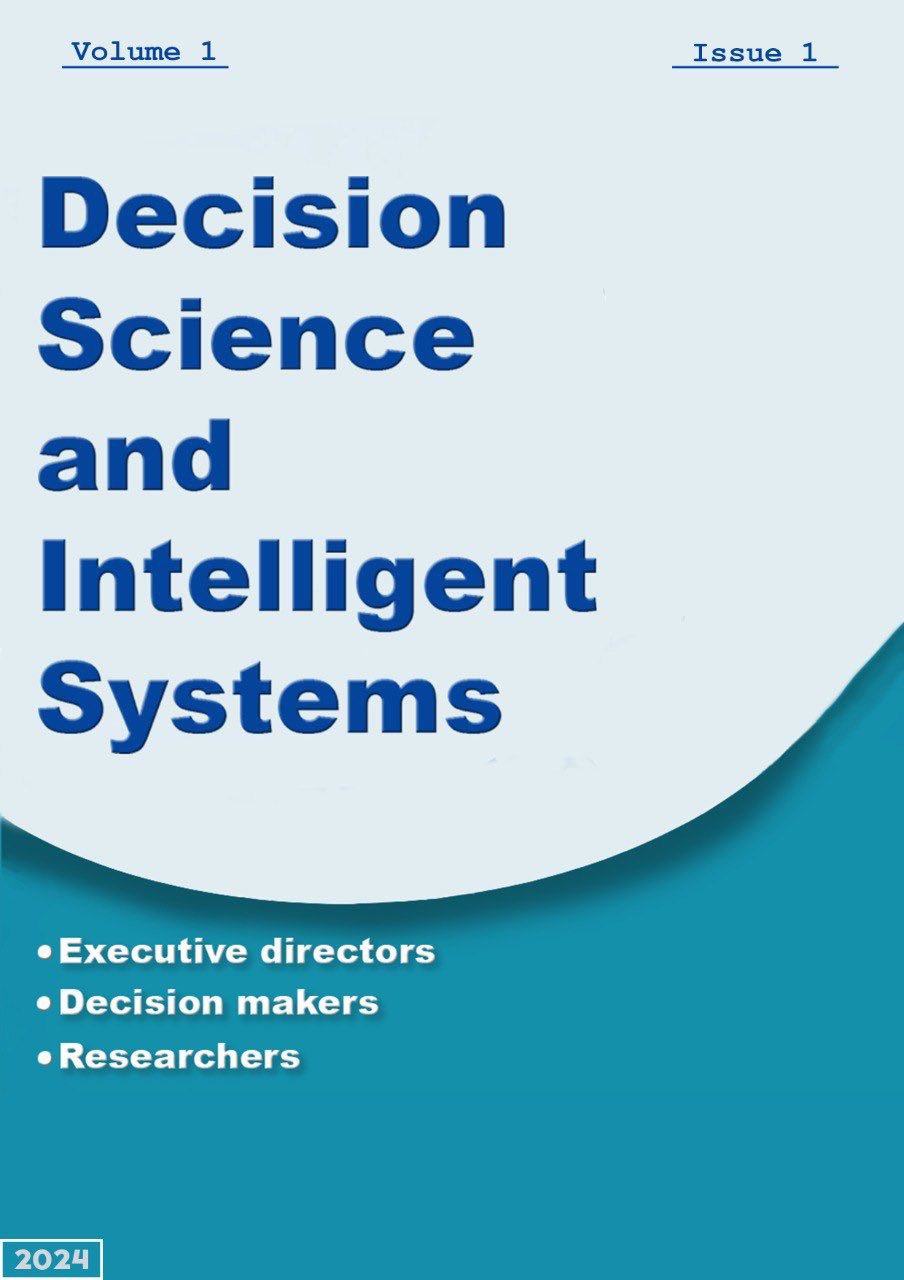A Methodological Framework for Designing Business Intelligence Systems Aligned with Strategic Goals and Organizational Processes
Keywords:
Business Intelligence, organizational dashboards, strategic goals, key performance indicators, Delphi technique, fuzzy logicAbstract
Purpose: This study aims to present a systematic method for designing a Business Intelligence (BI) system based on the strategic goals and processes of the organization.
Method: This descriptive study targets managers within the pump and electric motor manufacturing industries as its statistical population. The research was designed and carried out in three stages. In the first stage, the strategic goals of the organization were evaluated in terms of the possibility of participating in business intelligence systems. For this evaluation, four main criteria were used, which were derived from a previous study. Data for this phase were collected through expert-completed evaluation matrices then using the Shannon entropy statistical method, the weights of the criteria were calculated and a score was assigned to each goal. Goals with scores higher than 0.8 were selected for participation in the design of the BI system. In the second stage, a matrix was designed to examine the impact of process groups on the selected goals, and expert opinions were gathered using a five-point Likert scale. Given the uncertainty in the responses, data analysis was conducted using fuzzy logic. After defuzzification, the processes that influenced the strategic goals were identified. In the third stage, key performance indicators (KPIs) aligned with the selected processes and goals were identified. This analysis was carried out using the Delphi technique over five rounds to reach a final consensus. The finalized indicators were selected as the core components of the organization's Business Intelligence system.
Findings: The final outcome of the study is an operational framework for designing a Business Intelligence system based on the organization's strategic goals and processes.
Conclusion: By identifying goals that can be supported by business intelligence and applying the proposed methodology, the ability to monitor the achievement of strategic goals is provided, leading to improved organizational productivity.
References
Amin-Eshaeri, A. (2024). Evaluation of business intelligence and analytics in management accounting research. Journal of New Research Approaches in Management and Accounting, 8(92), 2315–2331.
Armstrong, G., & Kotler, P. (2015). Marketing: An introduction (12th ed.). Pearson.
Armstrong, M. (2014). Armstrong's handbook of human resource management practice (13th ed.). Kogan Page.
Brigham, E. F., & Ehrhardt, M. C. (2016). Financial management: Theory & practice (15th ed.). Cengage Learning.
Brigham, E. F., & Houston, J. F. (2016). Fundamentals of financial management (14th ed.). Cengage Learning.
Christopher, M. (2016). Logistics & supply chain management (5th ed.). Pearson.
Drury, C. (2013). Management and cost accounting (9th ed.). Cengage Learning.
El-Adaileh, N. A., & Foster, S. (2019). Successful business intelligence implementation: A systematic literature review. Journal of Work-Applied Management, 11(2), 121–132.
Goel, K., Bandara, W., & Gable, G. (2023). Conceptualizing business process standardization: A review and synthesis. Schmalenbach Journal of Business Research, 75, 195–237. https://doi.org/10.1007/s41471-023-00158-y
Golestani Zadeh, M., Etebarian, A., Naghsh, A., & Ebrahimzadeh, R. (2023). Presenting a model to assess the maturity level of business intelligence in e-businesses (Case study: Internet service providers). Industrial Management Studies, 21(68), 241–287.
Harfoush, B., El-Gayar, O. F., & Mansoura, N. (2024). Critical success factors for BI systems implementation and delivery: A systematic literature review. International Journal of Business Intelligence Research, 15(1), 1–22.
Hashemi, S. A., Alodari, H., Darei, M., & Razini, R. (2017). Designing a model for evaluating the development of organizational dashboards based on business intelligence logic in organizations. Smart Business Management Studies Journal.
Heizer, J., & Render, B. (2017). Operations management: Sustainability and supply chain management (12th ed.). Pearson.
Hopp, W. J., & Spearman, M. L. (2008). Factory physics (3rd ed.). McGraw-Hill Education.
Horngren, C. T., Sundem, G. L., & Elliott, J. A. (2008). Introduction to financial accounting (9th ed.). Pearson Prentice Hall.
Kabassi, K. (2021). Comparing multi-criteria decision-making models for evaluating environmental education programs. Sustainability, 13(20), 11220.
Kavianinia, F., Taghizadeh, H., & Heydari, S. A. (2023). Designing a developmental model of a management dashboard in the administrative automation system of Tejarat Bank.
Kotler, P., & Keller, K. L. (2016). Marketing management (15th ed.). Pearson.
Maghsoudi, M., & Nezafati, N. (2023). Navigating the acceptance of implementing business intelligence in organizations: A system dynamics approach. Telematics and Informatics Reports, 11, 100070.
Martins, A., Bianchi de Aguiar, M. T., Sambento, M., & Branco, M. C. (2024). Business intelligence system adoption and the leveraging of reporting process capabilities. Journal of Accounting & Organizational Change.
Martins, N., Martins, S., & Brandão, D. (2022). Design principles in the development of dashboards for business management. In D. Raposo, J. Neves, & J. Silva (Eds.), Perspectives on design II (Springer Series in Design and Innovation, Vol. 16). Springer. https://doi.org/10.1007/978-3-030-88638-0_8
Mathrani, A., Wickramasinghe, S., & Jayamaha, N. P. (2022). An evaluation of documentation requirements for ISO 9001 compliance in scrum projects. The TQM Journal, 34(5), 901–921. https://doi.org/10.1108/TQM-08-2020-0177
Monczka, R. M., Handfield, R. B., Giunipero, L. C., & Patterson, J. L. (2015). Purchasing and supply chain management (6th ed.). Cengage Learning.
Moradi, H. (2024). Investigating the relationship between the use of business intelligence and improvement of decision-making quality (Case study: Employees of Bank Melli, Kerman). Proceedings of the 7th International Conference on Management and Industry, 68–77.
Noohi, T., Taghizadeh, H., & Tari, G. (2025). A model for evaluating organizational strategic goals based on establishing business intelligence systems. Entrepreneurship and Innovation Research, 4(1), 1–13.
Nouri, N., Nezafati, N., & Motadel, N. (2021). Designing strategic management dashboards using the QFD approach (Case study: National Iranian Oil Company). Strategic Studies in Oil and Energy Industry Quarterly, 13(49), 1–19.
Pahl, G., & Beitz, W. (2013). Engineering design: A systematic approach (3rd ed.). Springer.
Pokhrel, J., & Awasthi, A. (2021). Effectiveness of dashboard and intervention design. In M. Sahin & D. Ifenthaler (Eds.), Visualizations and dashboards for learning analytics (Advances in Analytics for Learning and Teaching). Springer.
Ross, S. A., Westerfield, R., & Jordan, B. D. (2019). Essentials of corporate finance (10th ed.). McGraw-Hill.
Scheithauer, G., & Hellmann, S. (2013). Analysis and documentation of knowledge-intensive processes. In Business process management workshops (pp. 15–30). Springer. https://doi.org/10.1007/978-3-642-36285-9_2
Schiffman, L. G., & Kanuk, L. L. (2010). Consumer behavior (10th ed.). Pearson.
Schroeder, R. G. (2014). Operations management: Contemporary concepts and cases (6th ed.). McGraw-Hill Education.
Shiau, W. L., Chen, H., Wang, Z., & Dwivedi, Y. K. (2023). Exploring core knowledge in business intelligence research. Internet Research, 33(3), 1179–1201.
Stevenson, M., & Hendry, L. C. (2006). Aggregate load-oriented production planning: A review and comparison of selected approaches. International Journal of Production Economics, 104(2), 676–693.
Stevenson, W. J. (2015). Operations management (13th ed.). McGraw-Hill.
Tidd, J., & Bessant, J. (2014). Innovation and entrepreneurship (3rd ed.). Wiley.
Tiwari, R., Buse, S., & Herstatt, C. (2018). Integrating analytics in enterprise systems: A systematic literature review of impacts and innovations. Business & Information Systems Engineering, 60(3), 225–242.
Ulrich, K. T., & Eppinger, S. D. (2015). Product design and development (5th ed.). McGraw-Hill.
Vatan, E., Raeisi Ardali, G., & Shahin, A. (2022). Presenting an integrated model for selecting business information systems development methodologies with an organizational culture approach (Case study in the steel industry). Production and Operations Management Research, 13(4), 111–131.
Wisner, J. D., Tan, K. C., & Leong, G. K. (2016). Principles of supply chain management: A balanced approach (4th ed.). Cengage Learning.

Downloads
Published
Submitted
Revised
Accepted
Issue
Section
License
Copyright (c) 2025 طاهر نوحی, هوشنگ تقی زاده, غفار تاری (نویسنده)

This work is licensed under a Creative Commons Attribution-NonCommercial 4.0 International License.





